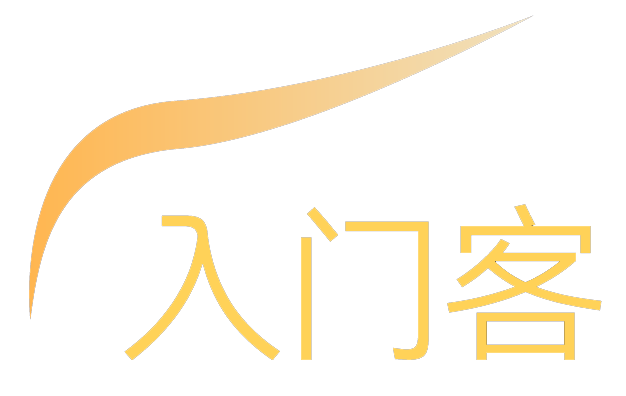C语言读写bmp位图文件
bitmap格式图片是未经压缩的,一般24bit位图(即一个像素点以24个二进制位表示)。
分别用8个二进制位表示R/G/B三种颜色,这样一共可以表示256*256*256=16777216种颜色。
8bit的位图则为黑白图像,32bit位图除16777216种颜色外还有8个bit表示光栅(有待具体研究)。
BMP图像文件被分成4个部分:位图文件头(Bitmap File Header)、位图信息头(Bitmap Info Header)、颜色表(Color Map)和位图数据(即图像数据,Data Bits或Data Body)。
第1部分为位图文件头BITMAPFILEHEADER,是一个结构体类型,该结构的长度是固定的,为14个字节。其定义如下:
typedef struct FileHeader
{
unsigned short bfType;
unsigned int bfSize;
unsigned short bfReserved1;
unsigned short bfReserved2;
unsigned int bfOffBits;
}__attribute__((packed))FileHeader;
BITMAPFILEHEADER结构的各个域详细说明如下:
bfType:位图文件类型,必须是0x424D,即字符串“BM”,也就是说,所有的“*.bmp”文件的头两个字节都是“BM”。
bfSize:位图文件大小,包括这14个字节。
bfReserved1, bfReserved2:Windows保留字,暂不用。
bfOffBits:从文件头到实际的位图数据的偏移字节数,bitmap文件前3个部分(文件头、信息头、颜色表)的长度之和。
第2部分为位图信息头BITMAPINFOHEADER,也是一个结构体类型的数据结构,该结构的长度也是固定的,为40个字节。其定义如下:
typedef struct InfoHeader
{
unsigned int biSize;
int biWidth;
int biHeight;
unsigned short biPlanes;
unsigned short biBitCount;
unsigned int biCompression;
unsigned int biSizeImage;
int biXPelsPerMeter;
int biYPelsPerMeter;
unsigned int biClrUsed;
unsigned int biClrImportant;
}__attribute__((packed))InfoHeader;BITMAPINFOHEADER结构的各个域的详细说明如下:
biSize:本结构的长度,为40个字节。
biWidth:位图的宽度,以像素为单位。
biHeight:位图的高度,以像素为单位。
biPlanes:目标设备的级别,必须是1。
biBitCount:每个像素所占的位数(bit),其值必须为1(黑白图像)、4(16色图)、8(256色)、24(真彩色图),新的BMP格式支持32位色。
biCompresssion:位图压缩类型,有效的值为BI_RGB(未经压缩)、BI_RLE8、BI_RLE4、BI_BITFILEDS(均为Windows定义常量)。这里只讨论未经压缩的情况,即biCompression=BI_RGB。
biSizeImage:实际的位图数据占用的字节数,该值的大小在第4部分位图数据中有具体解释。
biXPelsPerMeter:指定目标设备的水平分辨率,单位是像素/米。
biYPelsPerMeter:指定目标设备的垂直分辨率,单位是像素/米。
biClrUsed:位图实际用到的颜色数,如果该值为零,则用到的颜色数为2的biBitCount次幂。
biClrImportant:位图显示过程中重要的颜色数,如果该值为零,则认为所有的颜色都是重要的。
第3部分为颜色表。颜色表实际上是一个RGBQUAD结构的数组,数组的长度由biClrUsed指定(如果该值为零,则由biBitCount指定,即2的biBitCount次幂个元素)。RGBQUAD结构是一个结构体类型,占4个字节,其定义如下:
typedef struct tagRGBQUAD
{
unsigned char rgbBlue;
unsigned char rgbGreen;
unsigned char rgbRed;
unsigned char rgbReserved;
}RGBQUAD;
RGBQUAD结构的各个域的详细说明如下:
rgbBlue:该颜色的蓝色分量;
rgbGreen:该颜色的绿色分量;
rgbRed:该颜色的红色分量;
rgbReserved:保留字节,暂不用。
有些位图需要颜色表;有些位图(如真彩色图)则不需要颜色表,颜色表的长度由BITMAPINFOHEADER结构中biBitCount分量决定。对于biBitCount值为1的二值图像,每像素占1bit,图像中只有两种(如黑白)颜色,颜色表也就有21=2个表项,整个颜色表的大小为 2*siezof(RGBQUAD)=2x4=8个字节;对于biBitCount值为8的灰度图像,每像素占8bit,图像中有2^8=256 颜色,颜色表也就有256个表项,且每个表项的R、G、B分量相等,整个颜色表的大小为 个字节;而对于biBitCount=24的真彩色图像,由于每像素3个字节中分别代表了R、G、B三分量的值,此时不需要颜色表,因此真彩色图的BITMAPINFOHEADER结构后面直接就是位图数据。
第4部分是位图数据,即图像数据,其紧跟在位图文件头、位图信息头和颜色表(如果有颜色表的话)之后,记录了图像的每一个像素值。对于有颜色表的位图,位图数据就是该像素颜色在调色板中的索引值;对于真彩色图,位图数据就是实际的R、G、B值(三个分量的存储顺序是B、G、R)。下面分别就2色、16色、256色和真彩色位图的位图数据进行说明:
对于2色位图,用1位就可以表示该像素的颜色,所以1个字节能存储8个像素的颜色值。
对于16色位图,用4位可以表示一个像素的颜色。所以一个字节可以存储2个像素的颜色值。
对于256色位图,1个字节刚好存储1个像素的颜色值。
对于真彩色位图,3个字节才能表示1个像素的颜色值。
需要注意两点:
第一,图像格式规定一个扫描行所占的字节数必须是4的倍数,不足4的倍数则要对其进行扩充。假设图像的宽为biWidth个像素、每像素biBitCount个比特,其一个扫描行所占的真实字节数的计算公式如下:
DataSizePerLine = (biWidth * biBitCount /8+ 3) / 4*4
那么,不压缩情况下位图数据的大小(BITMAPINFOHEADER结构中的biSizeImage成员)计算如下:
biSizeImage = DataSizePerLine * biHeight
第二,一般来说,BMP文件的数据是从图像的左下角开始逐行扫描图像的,即从下到上、从左到右,将图像的像素值一一记录下来,因此图像坐标零点在图像左下角。
以下代码是C语言读写bitmap格式图片的几个函数,main()函数作为测试用。
为了兼容Linux 和windows平台用fopen、fread、fseek、fclose替换掉了open、read、lseek、close系列函数。
#include <unistd.h>
#include <fcntl.h>
#include <sys/stat.h>
#include <sys/types.h>
#include <stdlib.h>
#include <stdio.h>
//#include "window.h"
/*bmp file header*/
typedef struct FileHeader
{
unsigned short bfType;
unsigned int bfSize;
unsigned short bfReserved1;
unsigned short bfReserved2;
unsigned int bfOffBits;
}__attribute__((packed))FileHeader;
/*bmp info header*/
typedef struct InfoHeader
{
unsigned int biSize;
int biWidth;
int biHeight;
unsigned short biPlanes;
unsigned short biBitCount;
unsigned int biCompression;
unsigned int biSizeImage;
int biXPelsPerMeter;
int biYPelsPerMeter;
unsigned int biClrUsed;
unsigned int biClrImportant;
}__attribute__((packed))InfoHeader;
//we won"t use it while BitCount=24
typedef struct tagRGBQUAD
{
unsigned char rgbBlue;
unsigned char rgbGreen;
unsigned char rgbRed;
unsigned char rgbReserved;
}RGBQUAD;
typedef struct
{
unsigned char b;
unsigned char g;
unsigned char r;
}RGB_data;
/*for test global variable*/
/*maybe can not use this in the project*/
unsigned char *pBmpBuf,*pBmpBufOne,*pBmpBufTwo,*pBmpBufThree;
RGBQUAD *pColorTable;
int bmpWidth,bmpWidthback,bmpWidthsky;
int bmpHeight,bmpHeightback,bmpHeightsky;
int biBitCount,biBitCountback,biBitCountsky;
char * readBmp(char *bmpName)
{
FILE *fp = fopen(bmpName, "rb");
//int fp; /*maybe fd should be more comfortably*/
//fp = open(bmpName, O_RDONLY);
if (NULL == fp)
{
printf("There is no fp!!!
");
return 0;
}
fseek(fp, sizeof(FileHeader), SEEK_SET);
//lseek(fp, sizeof(FileHeader), SEEK_SET);
InfoHeader head;
fread(&head, sizeof(InfoHeader), 1, fp);
//read(fp, &head, sizeof(InfoHeader));
bmpWidth = head.biWidth;
bmpHeight = head.biHeight;
biBitCount = head.biBitCount;
int lineByte = (bmpWidth * biBitCount / 8 + 3) / 4 * 4;
if (biBitCount == 8)
{
//pColorTable=new RGBQUAD[256];
pColorTable = (RGBQUAD *)malloc(sizeof(RGBQUAD) * 1024);
fread(pColorTable, sizeof(RGBQUAD), 256, fp);
}
pBmpBuf = (unsigned char *)malloc(sizeof(unsigned char) * lineByte * bmpHeight);
fread(pBmpBuf, 1, lineByte * bmpHeight, fp);
fclose(fp);
return pBmpBuf;
}
int saveBmp(char *bmpName, unsigned char *imgBuf, int width, int height, int biBitCount, RGBQUAD *pColorTable)
{
if(imgBuf == NULL)
{
printf("imgBuf is NULL!!
");
return -1;
}
int colorTablesize = 0;
if (biBitCount == 8)
{
colorTablesize=1024;
}
int lineByte = (width * biBitCount / 8 + 3) / 4 * 4;
FILE *fp = fopen(bmpName, "wb");
if (fp == NULL)
{
printf("fopen error...
");
return -1;
}
FileHeader fileHead;
fileHead.bfType=0x4D42;
fileHead.bfSize = sizeof(FileHeader) + sizeof(InfoHeader) + colorTablesize + lineByte * height;
fileHead.bfReserved1 = 0;
fileHead.bfReserved2 = 0;
fileHead.bfOffBits = 54 + colorTablesize;
fwrite(&fileHead, sizeof(FileHeader), 1, fp);
InfoHeader infoHead;
infoHead.biBitCount = biBitCount;
infoHead.biClrImportant = 0;
infoHead.biClrUsed = 0;
infoHead.biCompression = 0;
infoHead.biHeight = height;
infoHead.biPlanes = 1;
infoHead.biSize = 40;
infoHead.biSizeImage = lineByte * height;
infoHead.biWidth = width;
infoHead.biXPelsPerMeter = 0;
infoHead.biYPelsPerMeter = 0;
fwrite(&infoHead, sizeof(InfoHeader), 1, fp);
if (biBitCount == 8)
{
fwrite(pColorTable,sizeof(RGBQUAD),256,fp);
}
fwrite(imgBuf, height * lineByte, 1, fp);
fclose(fp);
return 0;
}
/* main function test program*/
#if 1
int main(int argc, char *argv[])
{
char readPath[] = "logo256.bmp";
readBmp(readPath);
printf("width = %d, height = %d, biBitCount = %d
", bmpWidth, bmpHeight, biBitCount);
char writePath[] = "logo256copy.bmp";
saveBmp(writePath, pBmpBuf, bmpWidth, bmpHeight, biBitCount, pColorTable);
free(pBmpBuf);
if (biBitCount == 8)
{
free(pColorTable);
}
return 0;
}
#endif
#if 0
extern int a1,b1,n;
extern int a[50],b[50];
//int reviseBitMap(void)
int main(int argc,char *argv[])
{
int i,j;
int x,y;
int k;
char readPathOne[] = "back.bmp";
pBmpBufOne = readBmp(readPathOne);
printf("width = %d, height = %d, biBitCount = %d
", bmpWidth, bmpHeight, biBitCount);
bmpWidthback = bmpWidth;
bmpHeightback = bmpHeight;
biBitCountback = biBitCount;
int lineByteback = (bmpWidthback * biBitCountback / 8 + 3) / 4 * 4;
char readPathThree[] = "sky.bmp";
pBmpBufThree = readBmp(readPathThree);
printf("width = %d, height = %d, biBitCount = %d
", bmpWidth, bmpHeight, biBitCount);
bmpWidthsky = bmpWidth;
bmpHeightsky = bmpHeight;
biBitCountsky = biBitCount;
int lineBytesky = (bmpWidthsky * biBitCountsky / 8 + 3) / 4 * 4;
char readPathTwo[] = "plane.bmp";
pBmpBufTwo = readBmp(readPathTwo);
printf("wdith = %d, height = %d, biBitCount = %d
", bmpWidth, bmpHeight, biBitCount);
int lineByteplane = (bmpWidth * biBitCount / 8 + 3) / 4 * 4;
if (biBitCount == 8)
{
for (i = 0; i < bmpHeight / 2; i++)
{
for (j = 0; j < bmpWidth / 2; j++)
{
*(pBmpBuf + i * lineByteplane + j) = 0;
}
}
}
else if (biBitCount == 24)
{
x = a[a1];
y = b[b1];
for (i = 0; i < bmpHeight; i++)
{
for(j=0;j<bmpWidth;j++)
{
for(k=0;k<3;k++)
{
*(pBmpBufOne+(x+i)*lineByteback+(y+j)*3+k) &= (*(pBmpBufThree+i*lineBytesky+j*3+k));
*(pBmpBufOne+(x+i)*lineByteback+(y+j)*3+k) |= (*(pBmpBufTwo+i*lineByteplane+j*3+k));
if (lineBytesky != lineByteplane)
{
printf("............................
");
}
}
}
}
char writePath[]="hncuduplicate.bmp";
saveBmp(writePath,pBmpBufOne,bmpWidthback,bmpHeightback,biBitCountback,pColorTable);
}
free(pBmpBufOne);
free(pBmpBufTwo);
free(pBmpBufThree);
if (biBitCount == 8)
{
free(pColorTable);
}
return 0;
}
#endif
如有转载请注明出处。
作者:super_bert@csdn
- 上一篇: Windows和Linux/Unix系统中文件路径使用总结
- 下一篇:没有了

